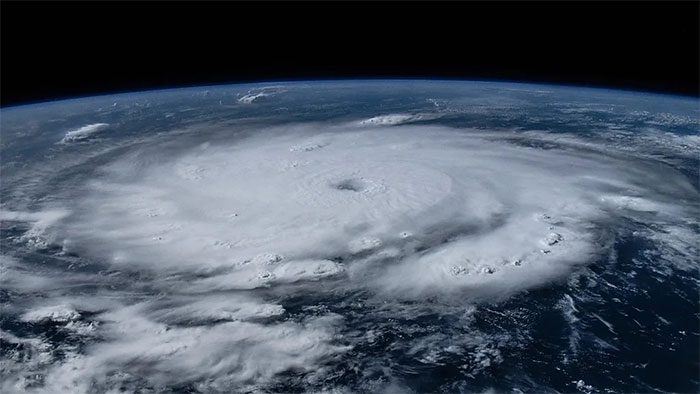On November 20, the Climate Central research institute released a study indicating that human-caused ocean warming has accelerated the maximum wind speeds of all Atlantic storms in 2024. This reflects how climate change is amplifying the destructive power of storms.
The Climate Central study found that the wind speeds of all 11 storms in 2024 increased by 14-45 km/h during a period when ocean temperatures reached unprecedented highs this hurricane season. The novel analytical method allowed the research team to focus on the trajectory of specific storms. For instance, at the moment when Storm Milton reached its peak intensity before landfall, the likelihood of sea surface temperatures warming due to climate change was over 100 times greater than normal, while maximum wind speeds increased by nearly 39 km/h.

Storm Beryl was the first Category 5 hurricane to form in June as the Atlantic hurricane season began. (Photo: NASA).
Research author Daniel Gilford stated that carbon dioxide (CO2) emissions and other greenhouse gases have impacted global sea surface temperatures. In the Gulf of Mexico, these emissions have caused sea surface temperatures to rise by approximately 1.4 degrees Celsius compared to pre-climate change levels, thus increasing the intensity of storms. For example, storms Debby and Oscar intensified from tropical storms to hurricanes. Other storms strengthened by one category on the Saffir-Simpson scale, with Milton and Beryl increasing from Category 4 to Category 5; Helene from Category 3 to Category 4. A storm increasing by one category corresponds to a fourfold increase in destructive potential. Storm Helene demonstrated particularly devastating power, claiming over 200 lives and becoming the second deadliest hurricane to hit the continental United States in over half a century, following Hurricane Katrina in 2005.
Gilford and his colleagues also published another study in the journal Environmental Research Climate, assessing storm intensity from 2019 to 2023. They found that 84% of storms during this period experienced wind speed increases of approximately 29 km/h due to warmer ocean surface temperatures. Over these six years, warmer oceans intensified 40 storms, raising their categories by one level. According to the National Oceanic and Atmospheric Administration (NOAA) in the U.S., a Category 5 storm causes over 400 times more damage than a minimal Category 1 storm, more than 140 times that of a minimal Category 3 storm, and over five times that of a minimal Category 4 storm. Three storms, including Rafael this month, saw wind speeds increase by two categories due to climate change factors. The authors note that the concern is not about more storms occurring, but rather that the worst storms are becoming increasingly destructive.
Although both studies primarily focused on the Atlantic basin, researchers indicated that their methods could be applied to tropical storms worldwide. This finding is broader than previous studies, which mainly highlighted the relationship between climate change and rainfall during storms.
Climate scientist Friederike Otto at the Royal Institute of Technology in London warned that superstorms are occurring with greater frequency, even though global temperatures have only increased by more than 1.3 degrees Celsius since pre-industrial times. Therefore, she cautioned that the impacts could become even more severe as temperature increases exceed 1.5 degrees Celsius.


















































